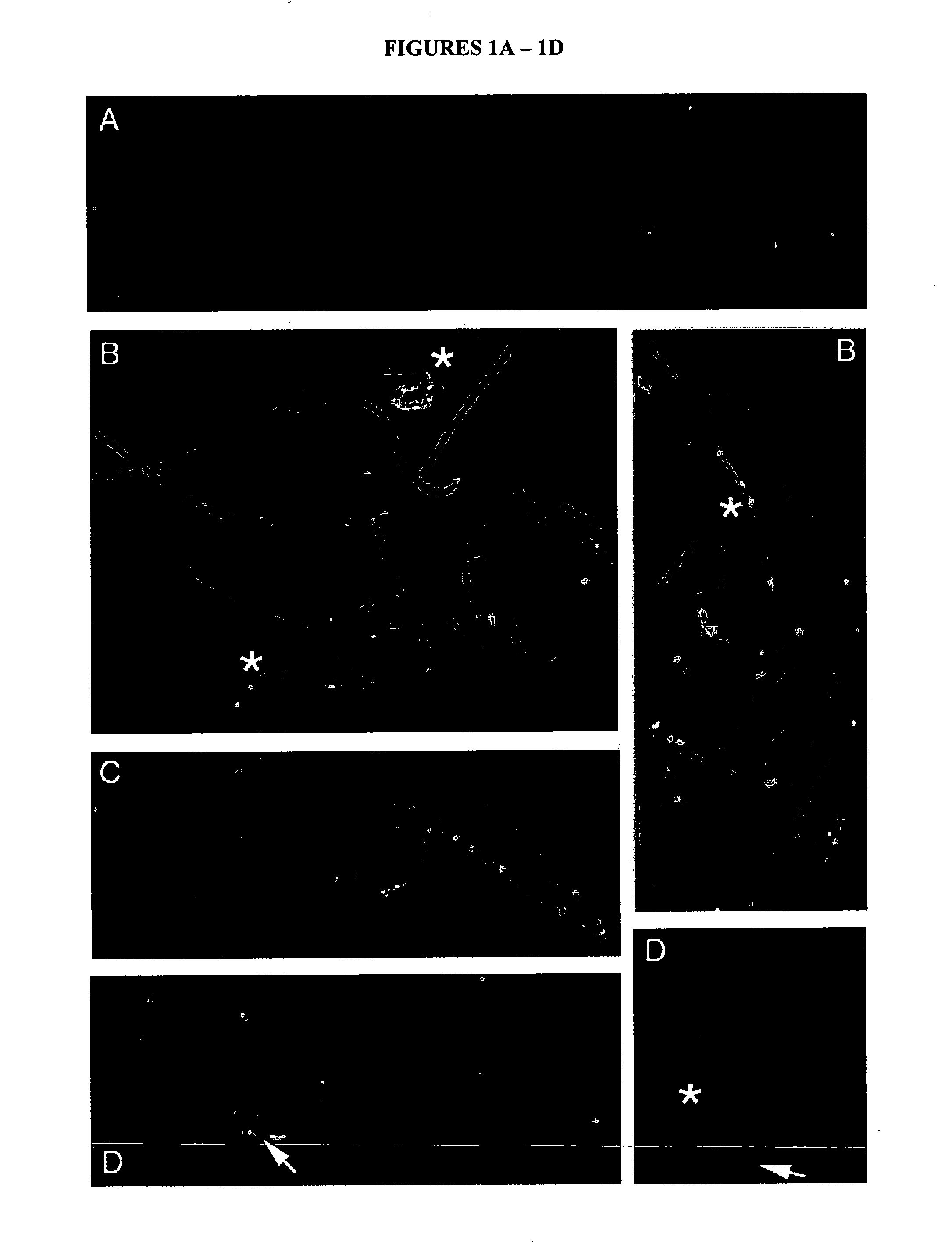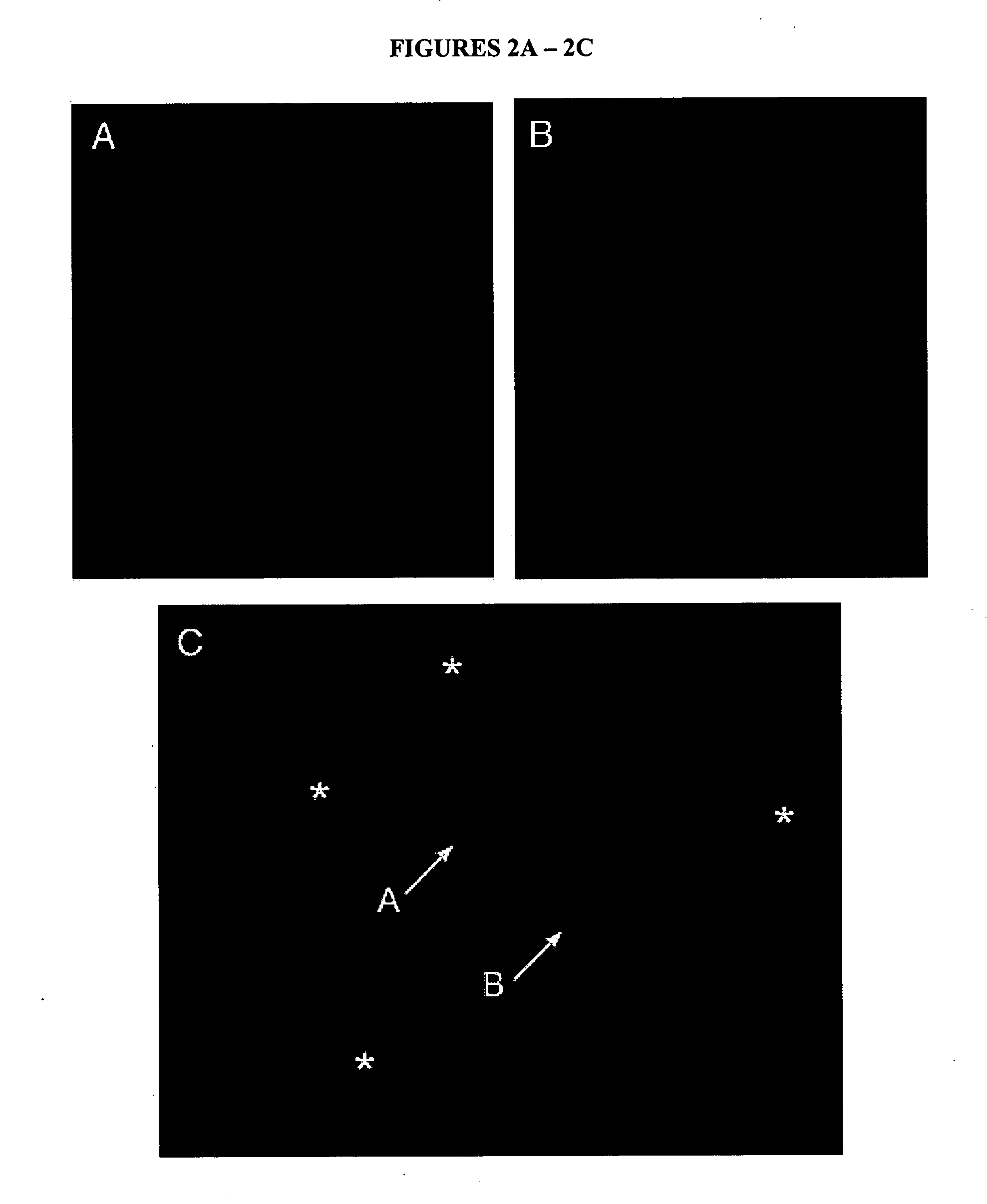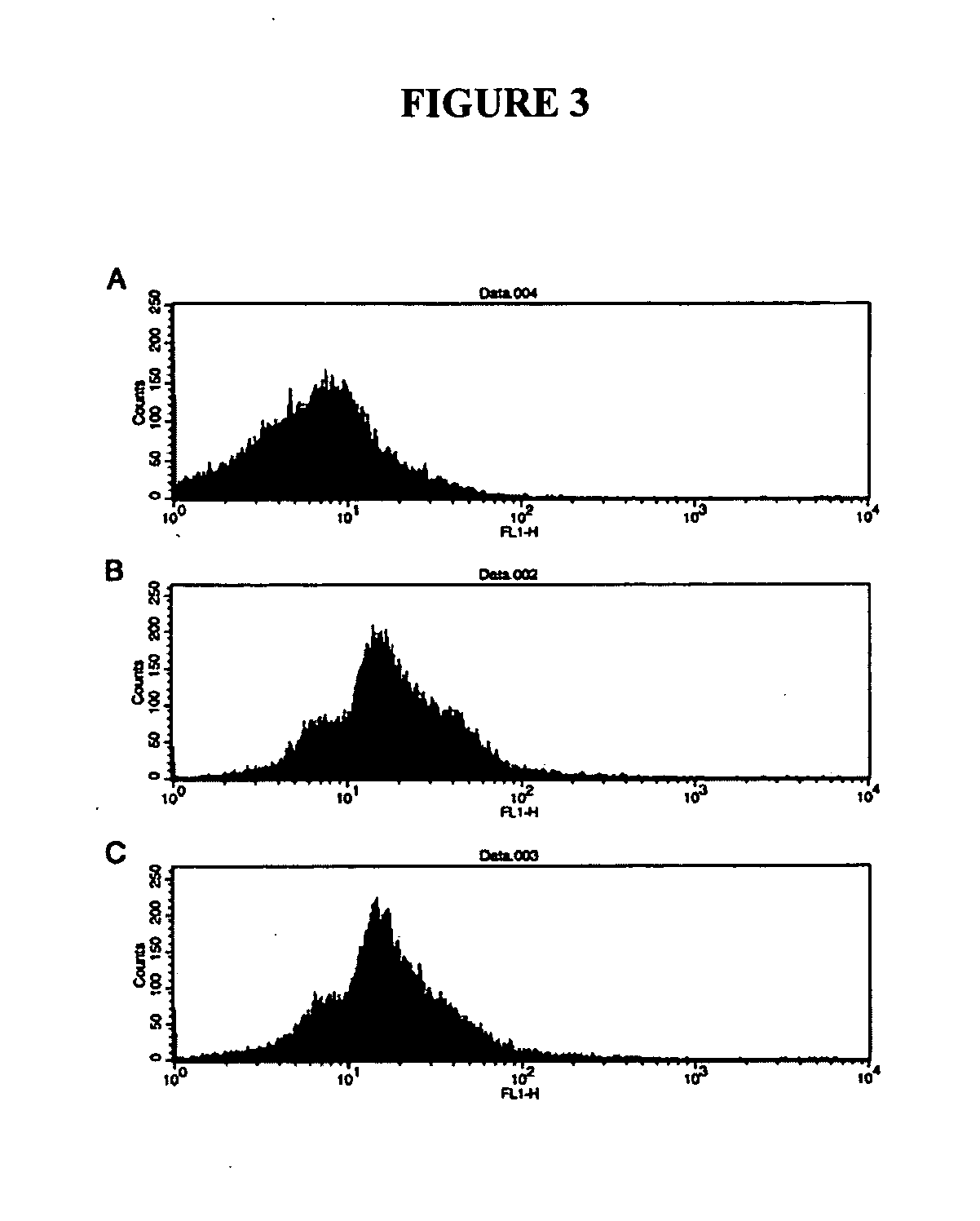In vitro uptake of SPAM 1 (PH-20) by mammalian sperm
a technology of sperm adhesion and in vitro uptake, which is applied in the field of in vitro uptake of spam 1 by mammalian sperm, can solve the problems of not being engineered to assist the sperm protein in performing its receptor activity, still a relatively inefficient technology, and inability to produce progeny, etc., to increase the intracellular signaling and adhesion activity of the molecule, and increase the success of in vitro fertilization
- Summary
- Abstract
- Description
- Claims
- Application Information
AI Technical Summary
Benefits of technology
Problems solved by technology
Method used
Image
Examples
example 1
Transfer of SPAM 1 to the Surface of Mammalian Sperm In Vitro
Introduction and Rationale
[0049] The challenge in detecting sperm binding of epididymal Spam1 (ES) is distinguishing ES from testicular Spam1 (TS) on sperm. To circumvent this problem we have taken advantage of Spam1 knockout (K / O) mice. The sperm from these mice do not express the protein on their surface as would occur with normal, wild-type mice. Specifically, such mice are genetically altered such that the Spam 1 gene is ablated and, therefore, its function is eliminated. These sperm make it possible to observe ES binding in vitro without the confounding presence of TS. Epididymal luminal fluid free of sperm contaminants is used with K / O sperm which are free of Spam1. Thus Spam1 found on the sperm after washing to remove physically adhering molecules, and processing for immunochemical detection, are molecules that are chemically bound to the membrane via the lipid anchor.
[0050] Spam1-deficiency of Spam1 K / O mice wa...
example 2
In Vitro Uptake of Epididymal Spam1 from Wild-Type Mice by Spam1 K / O Mouse Sperm
Procedure
[0054] Sperm-free epididymal luminal fluid (LF) was obtained from wild-type ICR mice. The LF was prepared by centrifugation (3,500×g for 20 min) to pellet sperm and cellular fragments and was shown to be sperm-free after microscopic examination. We co-incubated Spam1 K / O epididymal sperm (from all epididymal regions combined) with sperm-free unfractionated dilute LF (protein concentration 1-1.5 mg / ml) combined from all three regions at room temperature (RT) for 1 or 2 hr. Binding was performed after washing sperm in phosphate buffered saline (PBS) and 1 mM PMSF (protease inhibitor). The control consisted of sperm that were incubated only in PBS and 0.1% (w / v) bovine serum albumin (BSA). During co-incubation the dish was gently shaken to prevent the cells from settling at the bottom.
[0055] Following co-incubation, sperm were washed to remove unbound protein and then processed (fixed in 4% par...
example 3
Spam1 K / O Sperm Penetrate Significantly More Cumulus-Intact Eggs After In Vitro Exposure to Wild-Type (WT) LF Untreated with Spam1 Antibodies
[0058] To determine the impact of in vitro binding of epididymal Spam1 on fertilizing ability, sperm from wild-type or K / O mice were incubated with epididymal luminal fluid at 37° C. during a 45 min capacitation period at 37° C. in 5% CO2, 5% O2, and 90% N2. Wild-type sperm were used as a positive control. K / O sperm were tested for their performance after exposure to K / O luminal fluid, wild-type luminal fluid and wild-type luminal fluid with Spam1 antibody inhibition. Thus wild-type luminal fluid was pre-incubated with the anti-Spam1 antibodies to block the Spam1 present or with pre-immune serum before sperm were added (this antipeptide antibody has been shown to be specific for Spam1 in a number of studies, including assays using peptide inhibition). The wild-type sperm used as a positive control were incubated with wild-type luminal fluid. A...
PUM
| Property | Measurement | Unit |
|---|---|---|
| temperature | aaaaa | aaaaa |
| yellow- | aaaaa | aaaaa |
| concentration | aaaaa | aaaaa |
Abstract
Description
Claims
Application Information
 Login to View More
Login to View More - R&D
- Intellectual Property
- Life Sciences
- Materials
- Tech Scout
- Unparalleled Data Quality
- Higher Quality Content
- 60% Fewer Hallucinations
Browse by: Latest US Patents, China's latest patents, Technical Efficacy Thesaurus, Application Domain, Technology Topic, Popular Technical Reports.
© 2025 PatSnap. All rights reserved.Legal|Privacy policy|Modern Slavery Act Transparency Statement|Sitemap|About US| Contact US: help@patsnap.com



